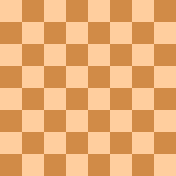
- Chess World Cup
- FIDE Grand Prix
- Olympiad
- World Championship
- List of strong tournaments
- List of world championships

- Checkmate patterns
- Chess openings
- Chess strategy
- Chess tactics
- Chess theory
- Endgames
- Pawn structure
- Problems/Compositions












|
|||||||||||||||||||||||||||||||||||||||||||||
| Moves | 1.e4 e5 | ||||||||||||||||||||||||||||||||||||||||||||
|---|---|---|---|---|---|---|---|---|---|---|---|---|---|---|---|---|---|---|---|---|---|---|---|---|---|---|---|---|---|---|---|---|---|---|---|---|---|---|---|---|---|---|---|---|---|
| ECO | C20-C99 | ||||||||||||||||||||||||||||||||||||||||||||
| Parent | King's Pawn Game | ||||||||||||||||||||||||||||||||||||||||||||
| Synonym(s) | Double King's Pawn Opening Double King's Pawn Game |
||||||||||||||||||||||||||||||||||||||||||||
An Open Game (or Double King's Pawn Opening) is a chess opening which begins with the following moves:
White has moved the king's pawn forward two squares and Black replies in kind, the result being an Open Game. Other responses to 1.e4 are termed Semi-Open Games, or Single King's Pawn Games.
The term Open Game can also refer to any chess position where ranks, files and diagonals are open, and usually favor tactical gameplay. Bishops are generally stronger than knights on an open board due to their ability to cover longer distances.
White opens by playing 1.e4, which is the most popular opening move and has many strengths - it immediately stakes a claim in the center, and frees two pieces (the queen and king's bishop) for action. The oldest openings in chess follow 1.e4. Bobby Fischer wrote that 1.e4 was "best by test". On the negative side, 1.e4 places a pawn on an undefended square and weakens the squares d4 and f4; the Hungarian master Gyula Breyer melodramatically declared that "After 1.e4, White's game is in its last throes." If Black keeps the symmetry by replying 1...e5, the result is an Open Game (Hooper & Whyld 1992) (Watson 2006:87-90).
|
|
||||||||||||||||||||||||||||||||||||||||||||||||||||||||||||||||||||||||||||||||||||||||
The most popular second move for White is 2.Nf3, attacking Black's king pawn, preparing to castle kingside, and preparing for d2-d4. Black's most common reply is 2...Nc6, which usually leads to the Ruy Lopez (3.Bb5), Italian Game (3.Bc4), or Scotch Game (3.d4), though 3.Nc3 Nf6 (the Four Knights Game), often played in the late 19th to early 20th century, or, less commonly, 3....g6, (the Three Knights Game), are other possibilities. If Black instead maintains symmetry and counterattacks White's center with 2...Nf6 then the Petrov's Defense will usually result, though White can avoid the extensive theory of the Petrov by playing 3.Nc3 if he wishes.
The Philidor Defence, (2...d6), largely fell out of use after World War I, as Black players sought positions offering more counterchances than the solid, though passive game which generally arises from this opening.
The Damiano Defense (2...f6) may be met by either 3.Nxe5 or 3.Bc4, with advantage; the Elephant Gambit (2...d5) and the Latvian Gambit (2...f5) are considered very risky for Black, with the latter usually seen only in correspondence play.
The most popular alternatives to 2.Nf3 are 2.f4 (the King's Gambit), 2.Nc3 (the Vienna Game), and 2.Bc4 (the Bishop's Opening). These three openings have some similarities; some of the quieter lines in the Vienna and Bishop's Opening can transpose to positional variations of the King's Gambit Declined, when White plays f2-f4 before playing Nf3. The King's Gambit was popular in the nineteenth century with grandmaster and amateur alike. White offers a pawn for speedy development, as well as to attack Black's central outpost. The Vienna Game also frequently features attacks on the Black center by means of f2-f4.
| a | b | c | d | e | f | g | h | ||
| 8 |

                                |
8 | |||||||
| 7 | 7 | ||||||||
| 6 | 6 | ||||||||
| 5 | 5 | ||||||||
| 4 | 4 | ||||||||
| 3 | 3 | ||||||||
| 2 | 2 | ||||||||
| 1 | 1 | ||||||||
| a | b | c | d | e | f | g | h | ||
In the Center Game (2.d4), White immediately opens the center, though if the pawn is to be recovered after 2...exd4, White must prematurely develop his queen. An alternative is to sacrifice one or two pawns by offering the Danish Gambit (3.c3). The early development of the queen in the Wayward Queen Attack (2.Qh5) or the Napoleon Opening (2.Qf3) looks amateurish, though the Wayward Queen Attack has been played in a grandmaster tournament by no less a player than Hikaru Nakamura.
The Portuguese Opening (2.Bb5), Alapin's Opening (2.Ne2), Konstantinopolsky Opening (2.Nf3 Nc6 3.g3), and Inverted Hungarian Opening (2.Nf3 Nc6 3.Be2) are offbeat tries for White, though none promise any advantage in the face of correct play.